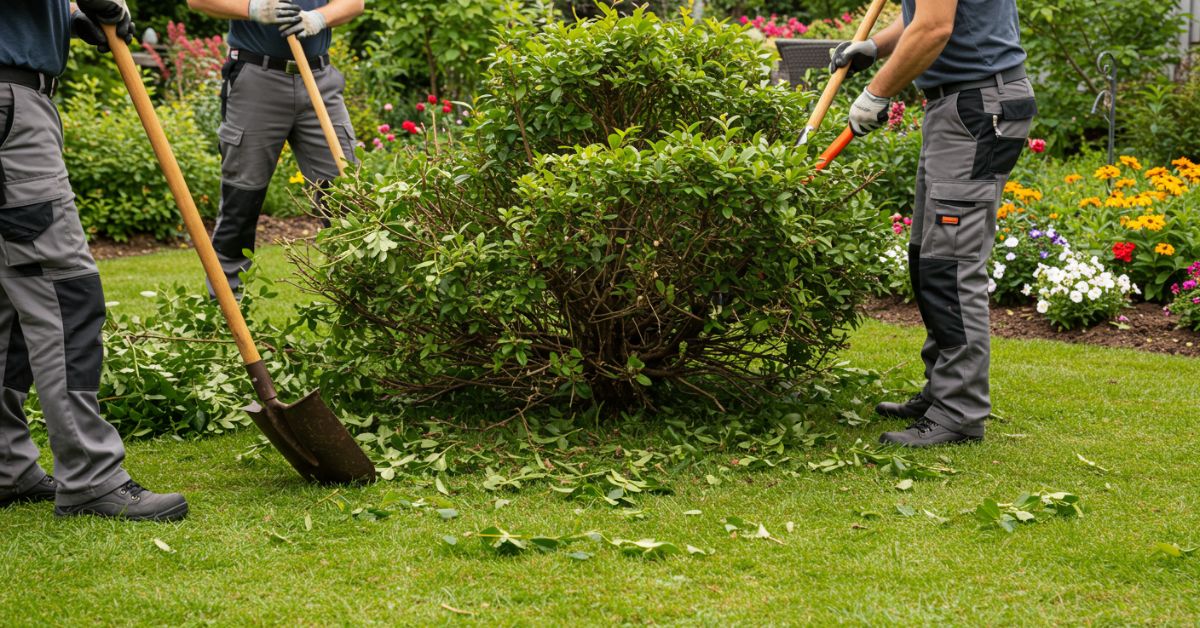When you’re thinking of landscape design or re-designing the garden getting rid of overgrown or old plants is usually a part of the procedure. It doesn’t matter if you want to increase the curb appeal, avoid damage to the foundation of your home or simply wish to have an empty slate for an entirely new design for your garden. The removal of shrubs is a standard chore for homeowners all over all across the United States. One question is often brought to mind: Is shrub removal costly for homeowners in the USA?
The simple answer is: it’s all in the details. While removal of shrubs is generally less expensive in comparison to tree trimming, many variables affect the final price. In the on average trees cost anywhere between $50 to $200 per remove in accordance with the size of the tree, its root depth and location as well as the technique used. You can also get a cost estimate using a shrub removal cost calculator.
Factors That Influence Shrub Removal Costs
To determine if removing trees is costly, it’s essential to understand the factors that influence pricing. Here are the main elements that affect the total cost of removal:
1. Size and Type of Shrub
The main factor that affects costs is how big the plant. Smaller, shallow-rooted bushes such as boxwoods are cheaper and easier to take down. Contrast this with large trees such as junipers, old azaleas or yews with extensive root systems need more effort and take longer.
| Shrub Size | Estimated Cost (per plant) |
| Small (1-3 ft.) | $50 – $75 |
| Medium (4-6 ft) | $75 – $125 |
| Large (7+ feet) | $125 – $200+ |
2. Root System Depth
Shrubs that have wide, deep roots are harder to clear completely. If they are left untreated the roots could continue to grow and cause problems for future construction or planting. A thorough removal will require more work and, possibly, more equipment which can increase the price.
3. Location and Accessibility
Does the shrub grow in close proximity to your home, fence driveway, home or power lines? If yes, it could need to be removed with care to avoid destruction. The terrain is steep or difficult to access. could make the work more labor intensive, which can affect the price.
4. Manual Vs. Mechanical Removal
It is possible to remove shrubs either by hand, using shovels and root saws or using tiny excavation machines. The mechanical method is more efficient, however it can be more costly and can cause damage to the landscaping if it is not done with care.
5. Disposal and Cleanup
Most landscaping companies charge extra to remove debris, unless it’s part of the estimate. The cost of disposal can be anywhere between between $50 and $150 depending on the quantity and the size of the plants taken away.
DIY Shrub Removal vs. Hiring a Professional
One method for saving money making the task yourself. For smaller to medium-sized shrubs DIY removal is achievable with a basic tool set such as an axe, pruning saw and pickaxe. However, larger or sturdier trees with extensive root systems might require assistance from a professional in order to guarantee safe and efficient removal.
DIY Pros:
- A lower cost upfront
- No scheduling needed
- Complete control over the process
DIY Cons:
- Physically demanding and time-consuming
- The risk of injury or property loss to underground utilities
- The disposal process must still be dealt with
Professional Pros:
- Fast and efficient
- The right tools and knowledge
- Sometimes, it includes cleaning and removal
Professional Cons:
- Costs of upfront costs that are higher
- It is important to plan your schedule to coincide with the contractor’s availability
If you’re only removing one or two small plants Doing it yourself could be an alternative. However, for larger-scale landscaping projects or large-scale shrubs hiring a professional will ensure the job is done properly.
Regional Price Variations in the USA
The cost of removing shrubs can differ substantially across the different regions in the United States. Rates of work, requirements for landscape services and environmental regulations vary by region. For instance:
- Northeast & West Coast: Generally higher costs because of higher labor costs and permits requirements.
- Midwest and Southern States: Most often, landscaping is more cost-effective.
- Urban vs. Rural: The services provided by the city tend to be more expensive due to accessibility issues as well as higher operating expenses.
When Is Shrub Removal More Expensive?
There are certain situations where tree removal could cost more:
- Overgrown plants with root systems that are entangled
- Shrubs that grow through fences or near foundations
- jobs that require cranes or excavation equipment
- Projects during the peak season for landscaping (spring and the early summer)
In certain cases when the plants form part of an, invasive plant issue, the price could comprise herbicide treatments as well as numerous visits.
How to Get the Best Price
Here are a few tips to make sure you’re not paying too much to remove your shrubs:
- Get multiple estimates: Contact at least three landscaping companies to get estimates.
- Find out what’s included. Check if stump/root removal and cleaning are a included in the price.
- Jobs in bundles: If you’re removing several trees or shrubs and want to get a bundle price reduction.
- Schedule in off-season In the fall, or in early winter can be less expensive.
Final Thoughts
What, then are shrub removals costly within The USA? For most homeowners, it’s a reasonable expense, particularly when compared to larger tree removals. The average cost of $50-$200 per plant can be considered affordable except for many trees that are deeply rooted or difficult to access.
The value of a neat secure, safe, and appealing yard typically surpasses the expense of removing it. If you’re looking to improve your landscaping or preventing damage to the roots of your property, getting rid of undesirable plants is an excellent investment.

